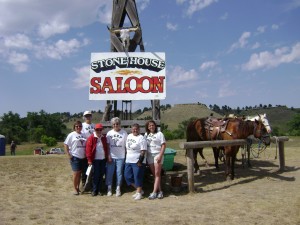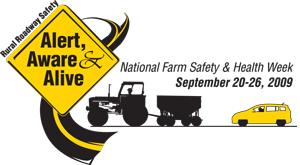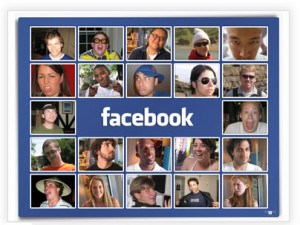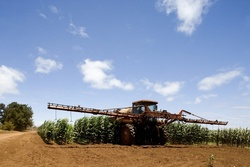Does web analytics give you a headache? Do you have anyone on your staff who has training in how to understand web analytics? If you don’t then you’re not unusual. A story today on eMarketer provides some survey results about what marketers are thinking on this subject.
To prove the success of their campaigns, marketers need analytics. But many report frustration with understanding and using the Web analytics tools necessary to prove their success to management, according to “The Web Analytics War Reader Survey” by Unica.
The biggest challenge for marketers was integrating Web analytics with other marketing solutions, cited by 46% of respondents. Verifying the accuracy of data was a problem for 41% of marketers, while 32% reported trouble with analytics that were not comprehensive and 29% complained of budgets that were too small.
I take exception to the statement above about analytics proving success. If by analytics they mean just web analytics. By this I mean that just because I can deliver a ton of impressions (visits, visitors, clicks, click throughs, etc.) it doesn’t mean the company sold anything. But how often does an agency or marcomm staff member justify an investment by providing a report that says, “We spent X$’s and got a story that aired on 200 radio stations, a feature in a publication with 100,000 “subscribers” and a web banner or post that had 10,000 visitors.” Wow. Sounds good. But what was the result? Did they sell more? Did that story actually air on those stations? Who listened? Did every subscriber read the feature in that magazine? Did every web visitor see and/or click through on the banner or post? How often do you get that much detail? Ever?
I want to find out how you agrimarketers are tackling this issue. What metrics do you want from the web? What is meaningful? What form do you want it in? Are there certain services or software you prefer? If you place a banner ad, what do you want reported to you? How often do you need to see information? What do you consider reasonable?
This is a very important issue in today’s new media world and one that I have spent countless hours researching and discussing. As ZimmComm has developed online communities that revolve around a blog I don’t think reporting unique website visitors is very helpful for you in evaluating an investment in an advertising order. Why? Because there are over 12 other measurements that have nothing to do with website visitors that need to be considered. Here’s an example:
Let’s look at one day’s traffic on AgWired. It can be as high as 1,000 unique visitors. If I post your story does that mean that only 1,000 people saw it? No way!!!!! Consider that there are almost 1,000 subscribers to the AgWired RSS feed. They may not visit the site. That’s part of the value of the RSS feed. Consider that every post goes to my Twitter account with almost 1,600 followers and that every time one of my tweets is re-tweeted, it is seen by their followers. Consider that Twitter feeds my Facebook profile where I have 350 friends. Consider that this also updates my FriendFeed. Consider that the images or video I’m using in the story may be included in my Flickr or YouTube account. Consider that there are over 40 other websites that have installed the AgWired widget which displays homepage posts on their website. I’m not even counting the other less used social networking mechanisms I’m utilizing like Posterous, MySpace, etc.
But even beyond the above, what about the search engine aspect of all those places on the web that I have posted/distributed content that are now showing up in key word search results or key word news alerts? What about all the people who are re-publishing my information or sending it to their friends, neighbors and colleagues? Of course now you’ll ask the question, “Who are these visitors?” That’s a topic for another post.
Yeah. It adds up and all the sudden the total number of impressions for that one post could grow from the initial 1,000 unique visitor impressions to as many as 5,000 impressions. In fact, this number may only be good for just that one day or point in time. All our stories are archived. We never delete them. How much higher will that number grow within the next week, month and year?
This is what I’m talking about. This is what we do and excel at. This is what we preach and this is what can help grow your brand.


 I’m a little behind in reporting this event to all of you, but I’m so proud of the efforts of the
I’m a little behind in reporting this event to all of you, but I’m so proud of the efforts of the  In this low key setting, the cattle women volunteers didn’t have to bring visitors into a booth in the busy streets of Sturgis; instead, the bikers came to them in a stop along the way. There was food, drinks, free horseback rides, photos, beef jerky samples and beef certificates for the rally goers. And, it seemed the bikers were happy to receive the great hospitality that awaited them there at the Stone House Saloon.
In this low key setting, the cattle women volunteers didn’t have to bring visitors into a booth in the busy streets of Sturgis; instead, the bikers came to them in a stop along the way. There was food, drinks, free horseback rides, photos, beef jerky samples and beef certificates for the rally goers. And, it seemed the bikers were happy to receive the great hospitality that awaited them there at the Stone House Saloon.  What does NASA think of agricultural production? You can find out in a
What does NASA think of agricultural production? You can find out in a  The recruiting web site has recently added online search features that highlight Certified Crop Advisers (CCA) and allow employers to quickly find CCAs.
The recruiting web site has recently added online search features that highlight Certified Crop Advisers (CCA) and allow employers to quickly find CCAs.  It’s official when the
It’s official when the 
 It was only a few months ago when Chuck and Cindy made the decision to sponsor the
It was only a few months ago when Chuck and Cindy made the decision to sponsor the  For those of you who want to analyze everything that passes your lips USDA has a new web page that will give you the details on any food products.
For those of you who want to analyze everything that passes your lips USDA has a new web page that will give you the details on any food products. Why is this man smiling? Probably because he spends about half the year in Hawaii working on new corn seed hybrids for growers to plant back here on the mainland.
Why is this man smiling? Probably because he spends about half the year in Hawaii working on new corn seed hybrids for growers to plant back here on the mainland. Ben told us that seed corn is now Hawaii’s biggest cash crop, and he was telling the truth. Just today,
Ben told us that seed corn is now Hawaii’s biggest cash crop, and he was telling the truth. Just today, 